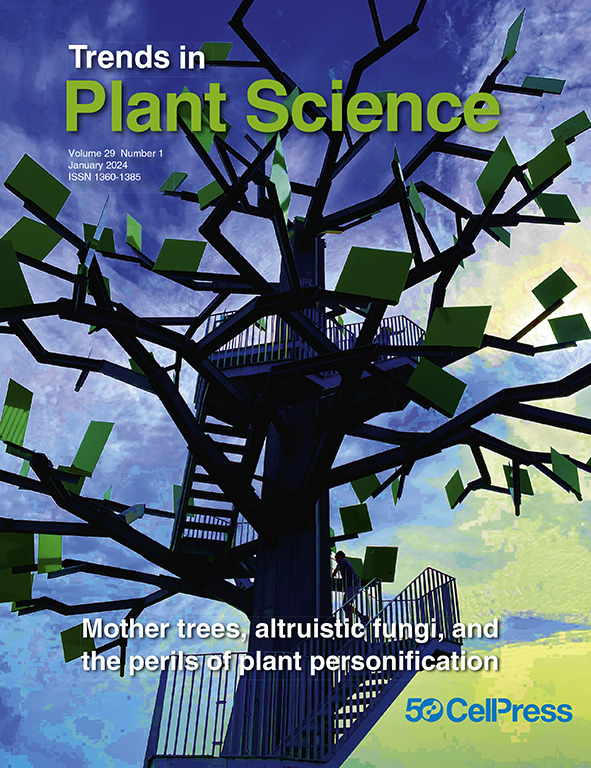小的力量:调节气孔运动的微RNA。
IF 17.3
1区 生物学
Q1 PLANT SCIENCES
Trends in Plant Science
Pub Date : 2025-02-01
Epub Date: 2024-10-01
DOI:10.1016/j.tplants.2024.09.009
引用次数: 0
摘要
调节气孔开度在干旱胁迫响应中至关重要。最近,Yang 等人通过揭示一种对脱落酸(ABA)有反应的新机制来控制保卫细胞中的活性氧(ROS),从而证明了微RNA-植物抗逆素(PCY)是如何调控气孔运动的。这开创了利用 miRNA 作为抗逆基因工程新靶点的先例。本文章由计算机程序翻译,如有差异,请以英文原文为准。
The power of small: microRNAs modulating stomatal movement.
Regulation of stomatal aperture is paramount in drought-stress responses. Recently, Yang et al. demonstrated how microRNA-plantacyanin (PCY) regulates stomata movement by revealing a novel mechanism responsive to abscisic acid (ABA) that controls reactive oxygen species (ROS) in guard cells. This sets a precedent for using miRNAs as a new target for stress-resistance genetic engineering.
求助全文
通过发布文献求助,成功后即可免费获取论文全文。
去求助
来源期刊

Trends in Plant Science
生物-植物科学
CiteScore
31.30
自引率
2.00%
发文量
196
审稿时长
6-12 weeks
期刊介绍:
Trends in Plant Science is the primary monthly review journal in plant science, encompassing a wide range from molecular biology to ecology. It offers concise and accessible reviews and opinions on fundamental plant science topics, providing quick insights into current thinking and developments in plant biology. Geared towards researchers, students, and teachers, the articles are authoritative, authored by both established leaders in the field and emerging talents.
 求助内容:
求助内容: 应助结果提醒方式:
应助结果提醒方式:


